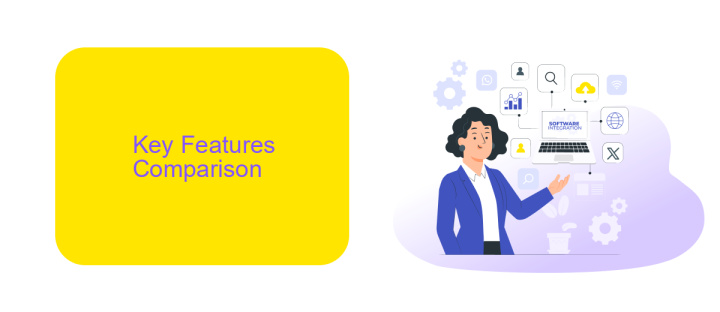MuleSoft Vs Azure Logic Apps
In today's rapidly evolving digital landscape, businesses seek robust integration solutions to streamline operations and enhance productivity. Two prominent players in this space are MuleSoft and Azure Logic Apps. This article delves into a comparative analysis of these platforms, highlighting their features, strengths, and potential use cases, to help organizations make informed decisions about their integration strategies.
Introduction
In the ever-evolving landscape of enterprise integration, choosing the right platform to connect your applications and automate workflows is crucial. Two leading solutions in this domain are MuleSoft and Azure Logic Apps. Both platforms offer robust capabilities for integrating diverse systems, but they cater to different needs and use cases.
- MuleSoft: Known for its powerful Anypoint Platform, MuleSoft provides comprehensive tools for API management, data integration, and application connectivity.
- Azure Logic Apps: A cloud-based service from Microsoft, Azure Logic Apps allows users to automate workflows and integrate apps, data, and services with ease.
Understanding the strengths and limitations of each platform is essential for making an informed decision. Additionally, services like ApiX-Drive can further streamline the integration process by offering user-friendly tools to connect various applications without extensive coding. This introduction aims to provide a foundational comparison to help you determine which solution aligns best with your organizational needs.
Key Features Comparison

MuleSoft offers a robust set of features including a comprehensive API management suite, data integration capabilities, and real-time analytics. Its Anypoint Platform is designed for building, deploying, and managing APIs and integrations in a unified environment. MuleSoft supports a wide range of connectors and provides tools for both developers and non-developers, making it versatile for various business needs. The platform's flexibility and scalability make it suitable for complex enterprise-level integrations.
Azure Logic Apps, on the other hand, provides a cloud-based service that simplifies the creation and deployment of workflows. It offers pre-built connectors to various Microsoft and third-party services, streamlining the process of integrating different systems. Azure Logic Apps is particularly strong in its seamless integration with other Azure services, providing a cohesive ecosystem for cloud-based solutions. For businesses looking for a user-friendly interface and quick setup, Azure Logic Apps is a compelling choice. Additionally, services like ApiX-Drive can further enhance integration capabilities by automating data transfers between different applications, making the overall process more efficient.
Architecture and Scalability

MuleSoft and Azure Logic Apps offer distinct architectural paradigms and scalability options for integration solutions. MuleSoft's architecture is based on the Anypoint Platform, which provides a unified, flexible, and scalable environment for API-led connectivity. This platform enables seamless integration across various systems, applications, and devices, making it ideal for complex enterprise environments.
- MuleSoft Anypoint Platform: A unified platform that supports API management, design, and implementation.
- Azure Logic Apps: A cloud-based service that simplifies the creation of workflows and integrates with various Azure services.
- Scalability: MuleSoft offers horizontal scaling with its CloudHub, while Azure Logic Apps leverages the Azure cloud infrastructure for automatic scaling.
When considering integration solutions, ApiX-Drive can be a valuable addition. It simplifies the process of connecting various applications and services, providing an intuitive interface for managing integrations. This can complement both MuleSoft and Azure Logic Apps by offering a streamlined approach to integration setup and management.
Integration Capabilities

MuleSoft and Azure Logic Apps offer robust integration capabilities, each catering to different business needs. MuleSoft provides a comprehensive platform for building application networks, enabling seamless connectivity across various systems. Its Anypoint Platform allows businesses to design, deploy, and manage APIs and integrations with ease.
Azure Logic Apps, on the other hand, is a cloud-based service that simplifies the creation of workflows and automates business processes. It integrates effortlessly with other Azure services and provides a user-friendly interface for designing complex workflows without writing extensive code.
- MuleSoft Anypoint Platform: API management, data integration, and connectivity with on-premise and cloud systems.
- Azure Logic Apps: Workflow automation, integration with Azure services, and pre-built connectors for various applications.
- ApiX-Drive: Facilitates integration setup, automates data transfer between different applications, and offers a wide range of connectors.
Both platforms excel in their respective areas, with MuleSoft being ideal for comprehensive API management and Azure Logic Apps for streamlined workflow automation. Depending on your specific requirements, either platform can significantly enhance your integration capabilities.
Pricing and Support
When comparing MuleSoft and Azure Logic Apps, pricing is a critical factor to consider. MuleSoft offers a subscription-based pricing model, which can be relatively high, especially for small to medium-sized businesses. The cost depends on the number of integrations and the volume of data processed. On the other hand, Azure Logic Apps operates on a pay-as-you-go model, allowing users to pay only for what they use. This can be more cost-effective for organizations with fluctuating integration needs. Both platforms offer free trials, enabling users to evaluate their services before committing financially.
Support is another crucial aspect. MuleSoft provides comprehensive support packages, including 24/7 customer service, dedicated account managers, and extensive documentation. Azure Logic Apps also offers robust support through Microsoft's extensive support network, including forums, documentation, and professional support plans. For businesses seeking additional assistance with integration setup, services like ApiX-Drive can be invaluable. ApiX-Drive simplifies the integration process by offering an easy-to-use interface and pre-built connectors, ensuring seamless connectivity between various applications and services.
- Automate the work of an online store or landing
- Empower through integration
- Don't spend money on programmers and integrators
- Save time by automating routine tasks
FAQ
What are the primary differences between MuleSoft and Azure Logic Apps?
Which platform is more suitable for large-scale enterprise integrations?
Can both MuleSoft and Azure Logic Apps integrate with on-premises systems?
What are the cost implications of using MuleSoft vs. Azure Logic Apps?
Is there a solution for automating integrations without extensive technical knowledge?
Apix-Drive will help optimize business processes, save you from a lot of routine tasks and unnecessary costs for automation, attracting additional specialists. Try setting up a free test connection with ApiX-Drive and see for yourself. Now you have to think about where to invest the freed time and money!


